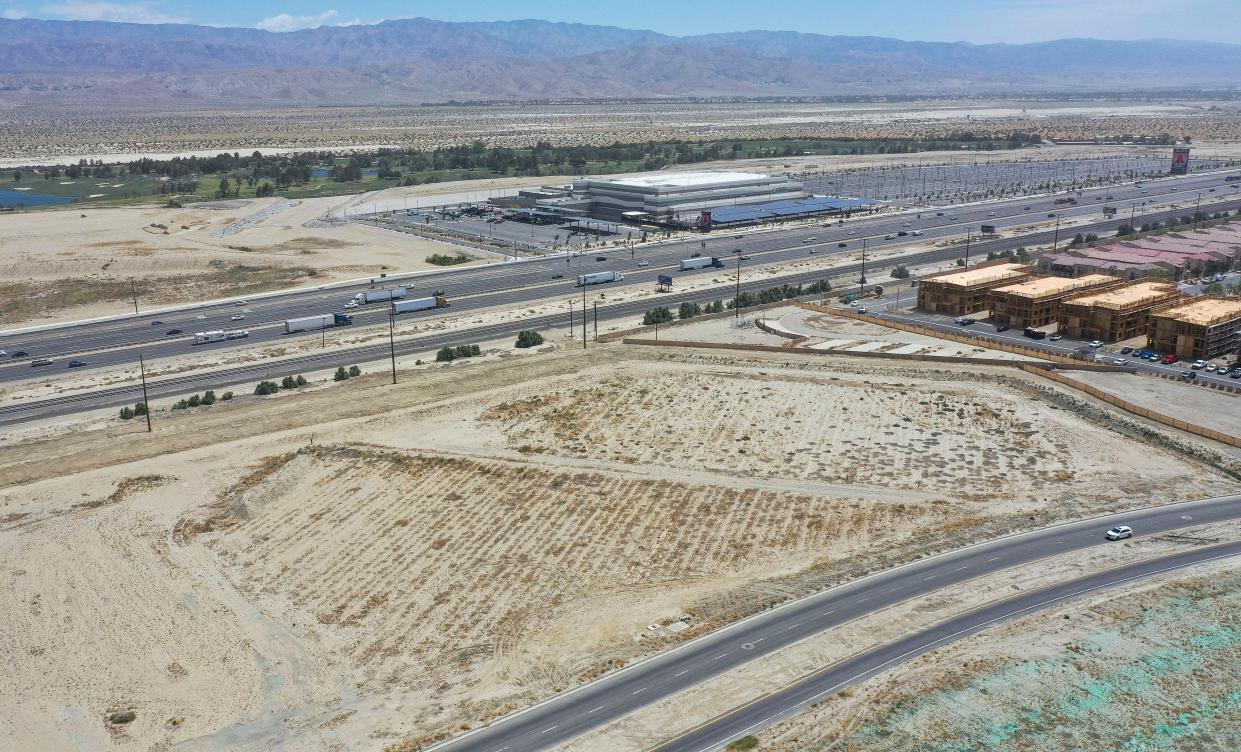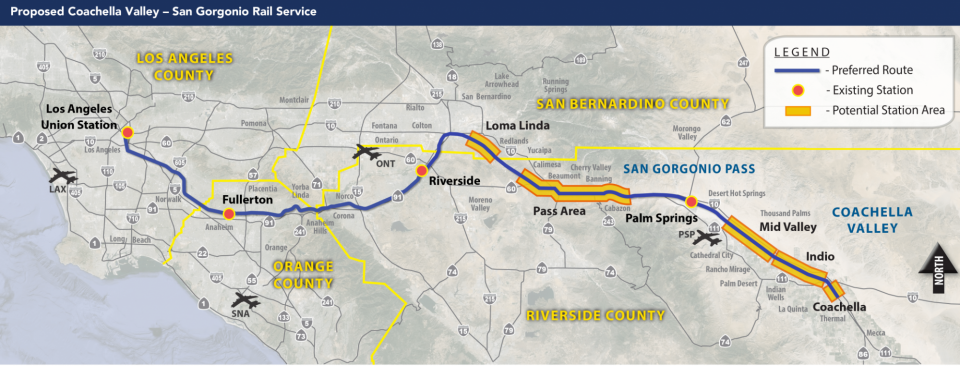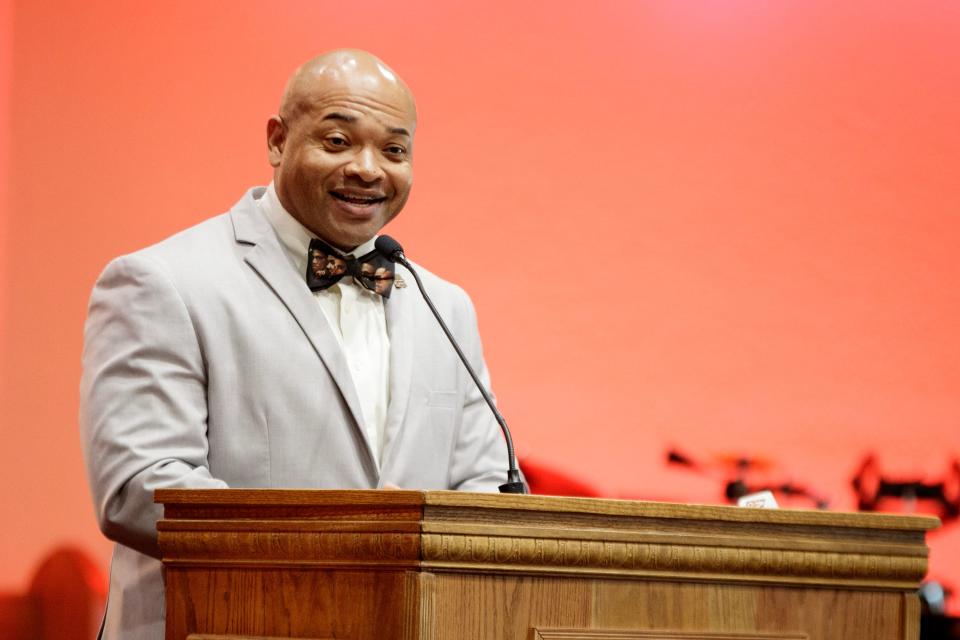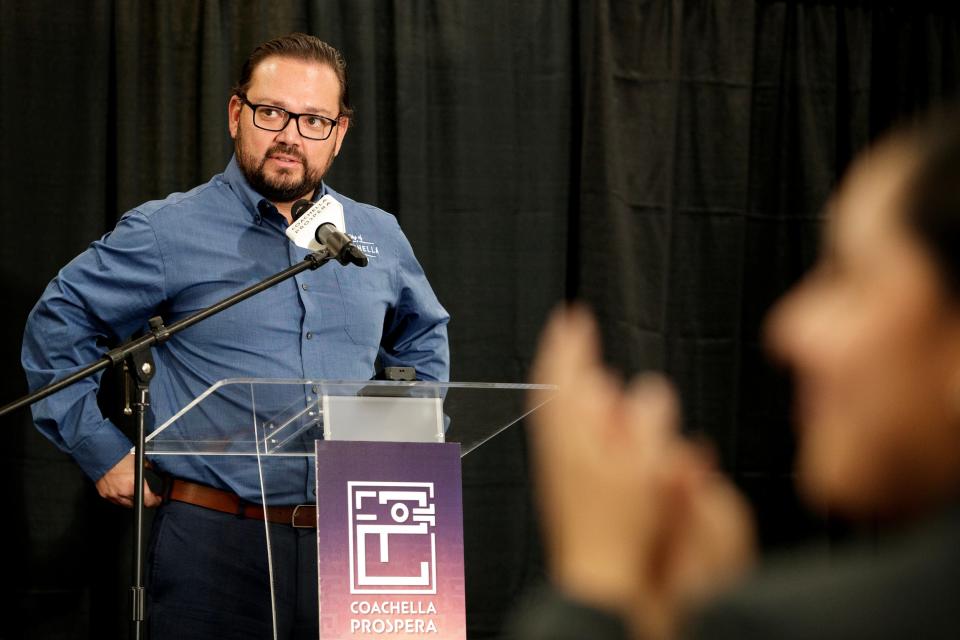Where will LA-to-Coachella train stop? Valley cities start eyeing spots for stations

While construction is still years away, the long-envisioned plan for daily rail service connecting the Coachella Valley to Los Angeles is beginning to take shape — and cities across the valley are eyeing sites for new rail stations.
While the exact locations have yet to be decided, the stations are likely to be built east of the existing station in Palm Springs. The passenger train in the works will use current stations in Los Angeles, Fullerton, Riverside, and Palm Springs, along with new stations in the Loma Linda/Redlands area, the San Gorgonio Pass area, the mid-valley, Indio and Coachella.
And Palm Desert is taking perhaps the most assertive approach, aiming to position the city as a prime spot for the mid-valley station. Last week, the city council approved a feasibility study of its rail station options and submitted it to the Riverside County Transportation Commission, which is helming the project in coordination with the Federal Railroad Administration and the California Department of Transportation.
Indio and Coachella, where railroads played a crucial role in the cities’ early development, are also preparing to build new rail stations, as the prospect of hopping on a three-hour train ride from the valley to LA inches closer to reality.
Where does the broader project stand?

The Coachella Valley-San Gorgonio Pass rail project it cleared its first major hurdle in 2022, when the Riverside County Transportation Commission approved the final Tier 1 environmental impact report that examined the project’s broader impacts.
Officials are aiming to begin work this year on the Tier 2 environmental document, which will cost $60 million and take two to six years to complete, according to a report submitted to the Palm Desert council by city management analyst Vanessa Mager.
“Although submittal of the Palm Desert Rail Feasibility Study does not guarantee the City will be selected for the ‘Mid-Valley’ stop, it does put the City in the best position,” Mager wrote. “Unfortunately, with the anticipated timeline of the Tier 2 study, the City may not know if it is selected until mid-way through RCTC’s study.”
The commission has also indicated that each city selected for a rail station location will bear all costs for its construction and operation. The Palm Desert study estimates total construction costs for its station at around $190 million, adding the city would partner with state, federal and local agencies, as well as private sector partners, to share those costs. (The overall project's price tag has been estimated at between $1 billion and $1.5 billion.)
While officials have largely avoided a more concrete timeline for the project's completion until reaching future phases, the city’s report states the daily rail service is expected to begin by 2040. (The approved study says the RCTC plan calls for rail service within 10 years, depending on funding.)
More: Train between the Coachella Valley and Los Angeles could happen in the next decade
Taking the train to Acrisure Arena?
The study largely examined the potential of several different areas along Interstate 10, which acts as Palm Desert’s northern boundary. The area is also primed for considerable residential growth, with more than 4,500 units either under construction or approved by the city north of Frank Sinatra Drive.
Three potential sites — one just east of Monterey Avenue and two near Portola Avenue — were deemed less desirable and eliminated from contention, with the study citing a lack of adequate space, as well as the Portola sites’ proximity to residential developments and their overlapping with land planned for a city park.
Instead, the report advances three options along I-10 just east of Cook Street, with the largest parcel — located just across Gerald Ford Drive from a new fire station in the works — identified as the preferred spot. The study cites its proximity to Acrisure Arena and to the city’s Cal State University San Bernardino campus, noting the potential for a bridge crossing over the interstate for pedestrians to get to the arena.
The city is also in discussions with the property owner to buy the preferred parcel tucked between Gerald Ford Drive and Interstate 10, according to the study.
The study specifically envisions a “transit hub” in Palm Desert that serves local rail passengers, Amtrak travelers and SunLine bus riders alike. It could be developed incrementally and in coordination with growth at the city’s UC Riverside and CSUSB campuses, per the study.
The council didn’t discuss the study for long, mainly commending city staff for their work on it. Councilmember Gina Nestande said the project was exciting and would be “such a win-win for our whole Coachella Valley.”
Which other cities are eyeing a rail station?
While the rail project is likely still over a decade away from completion, Palm Desert is one of several Coachella Valley cities vying for a station, while others are holding back.
Rancho Mirage city spokesperson Gabe Codding said the city is not actively pursuing its own rail station, adding: “Although we’re not opposed to a rail station within Rancho Mirage, we are supportive of a Palm Desert rail station due to its regional location, proximity to the Cal State University campus while still providing convenient access to Rancho Mirage.”
Similarly, the city of La Quinta supports the broader rail project, “but we are not doing anything specific with it,” according to city spokesperson Marcie Graham.
The competition for the “mid-valley” rail station could come down to Palm Desert and Cathedral City, whose spokesperson Ryan Hunt told The Desert Sun: “Cathedral City would obviously be interested in a potential ‘mid-valley’ rail station as part of the broader rail project planning to connect the Coachella Valley with the LA area.”
“While I don't have anything concrete to share, we remain in contact with our regional partners about a possible fit here in Cathedral City,” Hunt said in an email.
At the Palm Desert council meeting Thursday, a city planning official told the council no other cities have submitted any plans with the RCTC so far.
Meanwhile, officials in both Indio and Coachella are eyeing rail stations in the east valley.
Indio Councilmember Waymond Fermon, who serves on the RCTC, noted the city passed a feasibility study in 2020 examining a multimodal transportation hub along Indio Boulevard.

“Being the biggest city in the Coachella Valley, we have the prime location for commuter rail in the city of Indio,” Fermon said. “I feel that we're ahead of the spectrum, so to speak, and so we're ready when the project gets to that (phase).”
Coachella Mayor Steven Hernandez said the city is looking at three sites, largely running along the railroad tracks from Avenue 48 to Avenue 52, as spots for its potential rail station, noting the city won a $2 million state grant last summer allowing it to move forward with its own rail feasibility study.

Funding for the project will also play a key role in how quickly the plans advance, Hernandez said. He noted a potential Riverside County ballot measure allowing for up to a 1% sales tax increase for transportation projects could be on the ballot this fall, depending on if the RCTC decides to put the question to voters.
“We know that a rail into the Coachella Valley is going to be more than a billion dollars,” Hernandez said. “I know for a fact that we (as a region) have to bring skin in the game. We have to put our money where our mouth is.”
Tom Coulter covers the cities of Palm Desert, La Quinta, Rancho Mirage and Indian Wells. Reach him at thomas.coulter@desertsun.com.
This article originally appeared on Palm Springs Desert Sun: Where will Coachella to Los Angeles train stop? Cities eyeing stations

